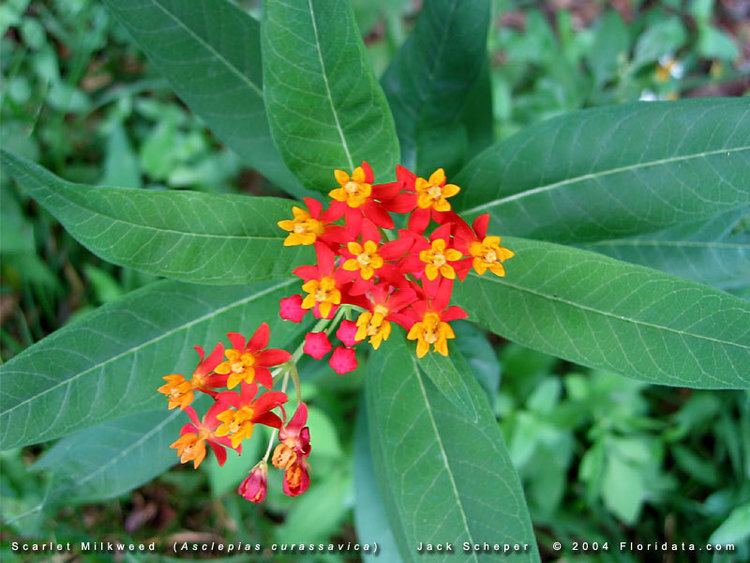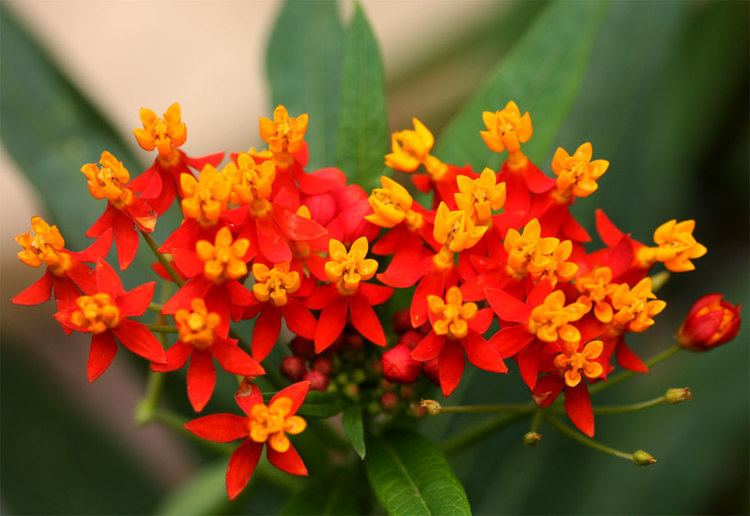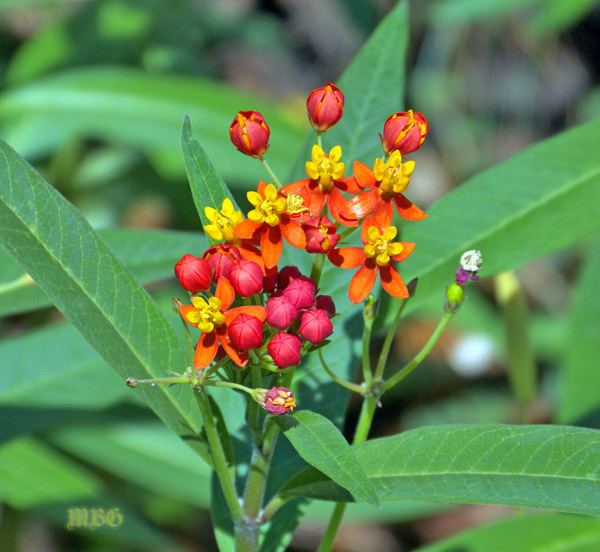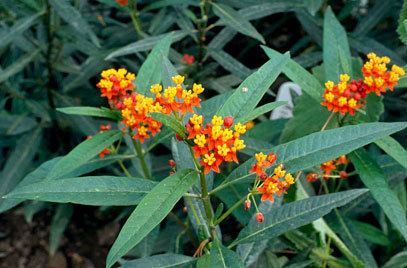Rank Species | Higher classification Milkweed | |
 | ||
Similar Milkweed, Gomphocarpus physocarpus, Butterfly weed, Asclepiadoideae, Common milkweed | ||
Monarch butterfly caterpillar on butterfly weed asclepias curassavica
Asclepias curassavica, commonly known as tropical milkweed, is a flowering plant species of the milkweed genus, Asclepias. It is native to the American tropics and has a pantropical distribution as an introduced species. Other common names include bloodflower or blood flower, cotton bush, hierba de la cucaracha, Mexican butterfly weed, redhead, scarlet milkweed, and wild ipecacuanha.
Contents
- Monarch butterfly caterpillar on butterfly weed asclepias curassavica
- Tuto jardin asclepias curassavica red burttefly fiche technique plante annuelle
- Description
- Cultivation
- Distribution
- Chemistry
- References
It is grown as an ornamental garden plant and as a source of food for butterflies. Notably, it attracts members of the Danainae subfamily, such as the monarch and the queen.

Tuto jardin asclepias curassavica red burttefly fiche technique plante annuelle
Description

Typical plants are evergreen perennial subshrubs that grow up to 1 m (3.3 ft) tall and have pale gray stems. The leaves are arranged oppositely on the stems and are lanceolate or oblong-lanceolate shaped ending in acuminate or acute tips. Like other members of the genus, the sap is milky. The flowers are in cymes with 10-20 flowers each. They have purple or red corollas and corona lobes that are yellow or orange. Flowering occurs nearly year-round. The 5–10 cm (2.0–3.9 in) long, fusiform shaped fruits are called follicles. The follicles contain tan to brown seeds that are ovate in shape and 6–7 mm (0.24–0.28 in) long. The flat seeds have silky hairs that allow the seeds to float on air currents when the pod-like follicles dehisce (split open).
Cultivation

There are a number of different cultivars with improved flower colors and shorter habit, some have brilliant red, yellow or orange colored flowers. Asclepias curassavica is excellent in butterfly gardens or as a cut flower. However, when the stems or leaves are broken, a poisonous milky sap exudes which can cause eye injury.
Distribution

Asclepias curassavica is described by NatureServe as a "widespread species, ranging from southern North America through Central America and into South America."

It is an introduced species in the US states of California, Florida, Hawaii, Louisiana, Tennessee, and Texas, as well as the US unincorporated territories of Puerto Rico and the United States Virgin Islands.
It has been introduced and naturalized in the Chinese provinces of Anhui, Fujian, Guangdong, Guangxi, Guizhou, Hainan, Hubei, Hunan, Jiangsu, Jiangxi, Qinghai, Sichuan, Xizang, Yunnan, and Zhejiang, as well as in Taiwan.
It is considered an exotic plant, but not a weed, at the Meteor Downs South Project near Rolleston, Queensland, Australia.
Chemistry
Asclepias curassavica contains several cardiac glycosides which include asclepin, calotropin, uzarin and their free genins, calactin, coroglucigenin and uzarigenin. It also contains oleanolic acid, ß- sitosterol, and glycosides of asclepin.
